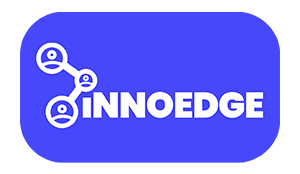As businesses strive to keep up with the rapidly evolving digital landscape, the complexity of marketing technology MarTech stack has become a significant challenge. With an ever-growing array of tools and platforms, integrating and managing these technologies can be overwhelming. This article explores the rising complexity of MarTech stacks and offers strategies to streamline operations for better efficiency.
Understanding the Complexity
The MarTech landscape has expanded dramatically, with over 13,000 solutions available in 2024. This proliferation of tools, driven by advancements in AI and other technologies, has led to increasingly intricate tech stacks that can be difficult to manage effectively. Each tool in a MarTech stack often serves a specific function—whether it’s CRM, marketing automation, data analytics, or content management—leading to fragmented data and siloed operations if not properly integrated (MarTech) (Iterable).
Key Challenges in MarTech Stack
- Integration Complexity: Integrating disparate tools is a significant challenge, particularly when systems use different data structures or APIs. Custom integrations often require substantial time and resources, and third-party integration tools can sometimes add additional layers of complexity (MarTech).
- Data Consistency and Quality: Ensuring consistent and high-quality data across all tools is crucial. Discrepancies or inaccuracies can lead to ineffective marketing campaigns and poor decision-making. Maintaining a single source of truth for customer data is often difficult without seamless integration (MarTech).
- User Adoption: New technologies often face resistance from users accustomed to existing systems. Without adequate training and support, employees may not fully leverage the capabilities of new tools, leading to underutilization and inefficiencies (MarTech).
- Scalability: As organizations grow, their MarTech stacks need to scale accordingly. This involves not only handling increased data volumes and user activity but also adapting to new business requirements and market conditions (MarTech).
Strategies for Streamlining Operations
- Evaluate and Map Your Current Stack: Begin by thoroughly evaluating your existing tools and how they connect to core business goals. Identify integration needs and gaps to map out data flows across your stack. This will highlight pain points and areas for improvement (MarTech).
- Set a Strategic Vision: Define a clear end-state vision and objectives for your integrated stack. Secure buy-in from stakeholders and ensure alignment across teams to prioritize and allocate resources effectively (MarTech).
- Prioritize Data Integration: Invest in robust data integration processes to ensure seamless synchronization between systems. This helps maintain data quality and consistency, enabling more effective marketing campaigns and decision-making (MarTech).
- Leverage AI and Automation: Utilize AI-driven tools to streamline repetitive tasks and enhance data analysis. Automation can help manage workflows more efficiently, reducing the burden on your team and allowing them to focus on strategic initiatives (Chief Marketing Technologist).
- Focus on Training and Support: Provide comprehensive training and ongoing support to ensure that employees can effectively use new tools. Encourage continuous learning and adaptation to keep up with evolving technologies and best practices (MarTech).
- Implement a Phased Integration Plan: Develop a phased implementation plan that balances complexity with quick wins. Allocate budget and resources to each phase, and regularly measure progress against defined success metrics to ensure continuous optimization (MarTech).
Key Takeaways
- Integration is Crucial: Effective integration of MarTech tools is essential for maintaining data quality, streamlining operations, and achieving strategic goals.
- Data Quality Matters: Consistent and accurate data is the foundation of effective marketing strategies and decision-making.
- User Adoption Requires Support: Ensuring that users are well-trained and supported is key to fully leveraging the capabilities of your MarTech stack.
- Scalability is Essential: As your business grows, your MarTech stack must be able to scale and adapt to new challenges and opportunities.
By addressing these challenges and implementing strategic integration plans, businesses can streamline their MarTech operations. And can enhance efficiency, and drive better marketing outcomes.



